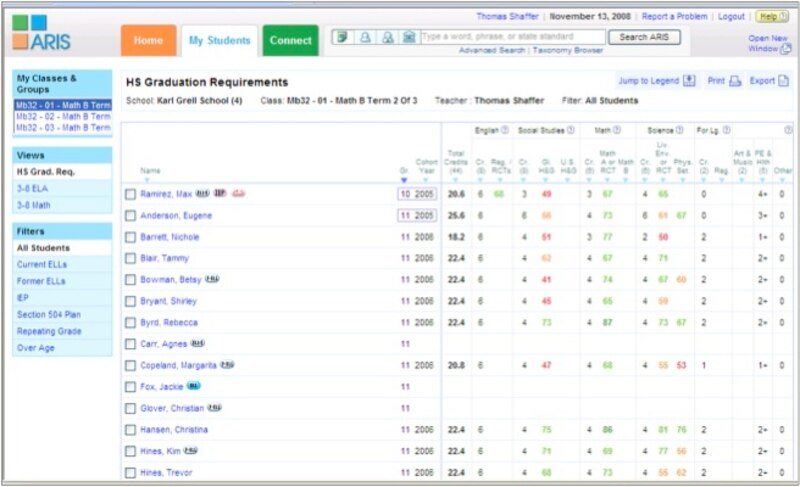If a Department of Education program launches but isn’t press-released, has it really launched? ARIS, the online data warehouse that was re-launched to principals a few weeks ago after a very rough start last year, was re-launched to reporters this morning.
(Teachers are next in line to be informed: They are getting postcards (PDF) from the Department of Education this week letting them know the new ARIS has arrived.)
A few thoughts:
- ARIS is actually two different programs, each housed in the single Web site. The first is the data warehouse. The second is a kind of Facebook for the Department of Education.The data warehouse part is meant to streamline reports about city public school students that are now spread across at least seven locations, including some databases created 20 years ago. Teachers at the press event today said they used to spend hours searching for basic information, like what schools their students attended previously, who their English teacher was last year, how they scored on a math test, or how many high school credits a high school student had won. ARIS collects all of that intelligence in a single location that teachers and principals can access just by going on the Internet.
- Here’s what a high school teacher would see, looking at one of his classes:

- The second program, the one that’s like Facebook, is called “Connect.” Every faculty member has a profile, as well as the ability to create groups, blogs, wikis, and events announcements. Here’s what fake teacher Pamela Brown’s profile looks like:Connect is just a few days old but teachers are apparently already making groups and profiles. A DOE official told me that he went into ARIS hoping to create a group about short check-up tests that students take during the school year — only to learn that a teacher had already made his own group.
- It’s been more than a year since ARIS’s first launch, but even now, some important functions have yet to launch. Teachers and principals cannot yet view students’ attendance records, and they cannot yet create their own data reports, which would allow teachers and principals to specify the kind of information they’re interested in and draw up a chart to display it. They also can only look at the most basic information about a test. Rather than see the full report of the skills a student understood and answered correctly, along with those they didn’t understand, ARIS so far reports just the final test score. School officials said all these functions will be available eventually: Attendance records will go online in two weeks; customized charts by this winter, and the skills information will be available some time during this school year.
- We reporters had more access to the software this year than last year. Last time, we watched Chancellor Joel Klein page through a Power Point and had to take his word for it that the thing worked. This time, we each had a computer and we tested out a simulated ARIS on our own. On a user-friendliness scale, the program was closer to Facebook than Excel. Tiny color-coded labels indicated each student’s special traits — an English Language Learner was labeled “ELL”; a former English Language Learner was “F-ELL.” It was also easy to compare students to each other. To see which student got the highest score on the Math A Regents exam, I just clicked a label that said “Math A,” and their names instantly re-sorted themselves in rank order.
- Three real school faculty — a teacher, an assistant principal, and a principal — passionately sang the praises of ARIS. One, Barbara DePasa, the assistant principal for math at Lehman High School in the Bronx, said she spent Saturday night with about a dozen math teachers, excitedly prepping them on the new tools. More on her later.
